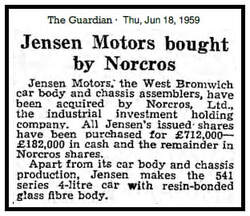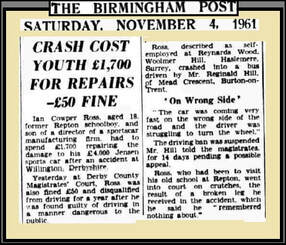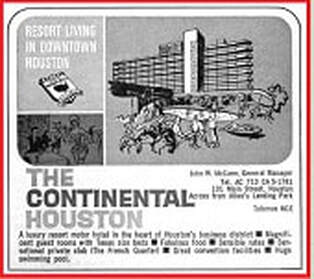|
Prince Charles explains 'pebble theatre'.
|
PEBBLE
|
|
Don Pierson [right] explains how a young Prince Charles made a request to join the Radio London fan club. |
|
|
Prince Charles explains 'pebble theatre'.
|
PEBBLE
|
|
Don Pierson [right] explains how a young Prince Charles made a request to join the Radio London fan club. |
|
|
This edition updated several times on 10/3-4-5/2020 to mainly include new illustrations. Now we are going to peer behind the scenes of those created news events regarding the creation of Radio Caroline in 1964. We will microscopically analyze what really did happen, and what everyone was led to believe had happened. There is a difference: a big difference. One is real and one is fake
The year in which this initial meeting took place and the subsequent introduction of Allan James Crawford to Aodogán O'Rahilly, is 1963, and it is one key (but not the only key), that unlocks the mystery surrounding the creation of Radio Caroline. In our prior editorial series about Greenore, we microscopically detailed how the dreams of Aodogán O'Rahilly were financed by Irish government backed loans for a business plan that failed. After being granted approval by the Irish government to reapply those same loans to a second business plan involving the reopening of the Port of Greenore, a trio of interests set about about creating a container ferry service to export Irish goods to the island of Great Britain. This new plan which was announced to the public on Friday August 5. 1960, involved a partnership between Weatherwell Ltd., which was managed by Aodogán O'Rahilly; the Irish nationalized transportation group known by the initials CIE, who were working in conjunction with the British nationalized road haulage group known by the initials of RBS; plus a contractual relationship with the British firm of Mountwood Shipping Co. Ltd. of Liverpool who owned a small container motor vessel called 'Friendship'. To kick-start this new plan the government-backed loans had been used to install a container crane at the water's edge, and Irish Custom had returned to their abandoned office to reopen the Port of Greenore. The first customer for this new Irish Ferry Container Traffic Service was Weatherwell Ltd., and the first export was made in 20 containers. But the idea was to use this announcement and Weatherwell Ltd participation to cause other Irish exporters to use this new service and cause the area around Greenore to prosper. But on Saturday, January 26, 1963, as we previously reported in depth, only total failure was in sight. The Port of Greenore remained a transitory point of departure for exports made by Weatherwell Ltd. Meanwhile, across the border in Northern Ireland at Larne on Friday, November 4, 1960, another Irishman from Cork in the Republic of Ireland had been complaining about the same issue that the announcement on Friday August 5. 1960, was supposed to cure with the creation of the new Irish Ferry Container Traffic Service. Charles Orr Stanley, unlike Aodogán O'Rahilly who was born on Sept 22, 1904, at Hove, near Brighton in England, had been born on April 15, 1899 at Cappoquin, County Waterford in Ireland. Whereas Aodogán O'Rahilly managed a roofing tile company, Charles Orr Stanley managed factories belonging to the PYE Group of companies that operated both within the Republic of Ireland and in Northern Ireland as well as on the island of Great Britain and many other subsidiaries in Australia, the USA and other nations of the world. The products produced by the PYE Group of companies reflected an impressive list of consumer; industrial and military contracts reaching back before World War II. As we previously noted many times in earlier editions of this Blog, Charles Orr Stanley and his son John Stanley were the ultra-secret movers and shakers behind the creation of Radio Caroline. But because of the PYE government contracts, the PYE involvement in Radio Caroline had to be kept quiet. PYE had no interest in running and operating stations, it was in the business of selling "packaged" radio and television stations to any operator, anywhere in the world who wanted to start a broadcasting station. These "packaged" radio and television stations were literally radio and television stations self-contained inside a container building that could be transported and located anywhere in the world. The PYE "packaged" radio and television stations began to make their appearance for the first time in July 1960 at the Royal Agricultural Show held in Cambridge, England. The second unveiling was at an exclusively PYE exhibition held at the Royal Festival Hall a month later. We will have a lot more to say about all of this in future editions. What all of this meant for PYE was that the originator of Radio Caroline had to be kept very secret indeed. The reason why C. O. Stanley got involved was to promote the sale of his "packaged" radio and television stations. It was C. O. Stanley who, with colleagues, forced the creation of the Independent Television Authority (ITA), and thus the licensing of program contractors who operated monopolies reselling airtime under their sponsoring arrangement with ITA. But there had been a big backlash against the original ITA and its program contractors, and that began to bubble to the surface beginning in 1960 with the birth pangs of the Pilkington Committee. So Charles Orr Stanley came up with a counter-attack. First he encouraged the registration of hundreds of local radio station companies in the UK; he also got behind a campaign in the Isle of Man to build a super-power commercial station similar to Radio Luxembourg. He had also been part of a trio of competing promoters to build stations in the Irish Republic, and they included the man behind Radio Monte Carlo and Europe 1, and a Texas maverick who called himself "The Old Scotchman" with the birth name of Gordon McLendon. In the end Charles Orr Stanley won a contract from the Irish government to build its first television stations. Others wanted to operate stations, but Charles Orr Stanley only wanted to build them. Because Pilkington was resisting with BBC help, any attempt to introduce sponsored commercial radio broadcasting, and it was even trying to curtail the program contractors licensed by ITA, Charles Orr Stanley had begun behind-the-scenes agitation to create an offshore radio station capable of reaching the population heartland of the United Kingdom. As part of his ultra-secret plan Charles Orr Stanley began gathering a team of highly qualified engineers, two of whom had recently retired from important engineering positions at the British Broadcasting Corporation. Stanley's plan was trial and error. It began with a project involving the Dutch group behind VRON that eventually became Radio Veronica and their British planned station CNBC. When that folded he moved on to GBOK which was a spin-off from a shoestring operator who had applied and received a copycat registration for a company called 'Voice of Slough'. As a part of the registration process of hundreds of would-be stations, the Rank Organization had plans for a many stations with the prefix name 'Voice of ....'. But GBOK was run by a former vacuum cleaner salesman and con man who had got his hands on his wife' inherited fortune, and Metropolitan Police were sure that Arnold Swanson was really trying to con a lot of investors into handing over money to him, and that GBOK was not intended to succeed. However, the hulk that Swanson intended to use was tied up next to a PYE factory at Sheerness, and so when GBOK began to fall apart before it began, Charles Orr Stanley turned his attention to Australian Allan James Crawford. Now Crawford had also been involved with VRON and by 1962 he got the idea of starting 'Radio Atlanta' using the McLendon ship 'Bon Jour' which had been used for 'Radio Nord' off Sweden. But because McLendon had strong ties to both the Irish Republic and the United Kingdom, he had been advised that to try to start an offshore station off the coast of England in reach of London, would be suicidal. The British would seize it under the guise of enforcing British laws known as the 'Hovering Acts' which were intended to stop smugglers from anchoring 'mother ships' just outside British territorial waters, and then bringing their cargos ashore in small boats to isolated spots on the coastline. McLendon brought the mv 'Bon Jour' renamed 'Magda Maria' to the North Sea and anchored it off Brightlingsea, Essex. McLendon's point man was Charles William (Bill) Weaver, and he moved into a London hotel to try to sell the broadcasting ship. The year was 1962 and Crawford had just lost his financial backer of his his original plan using a Trinity House vessel docked at the Isle of Wight. So Crawford did not have the money to buy McLendon's radio ship. At the close of 1963, Weaver began the process to take McLendon's silent radio ship to Texas as part of the Kennedy brothers' clandestine and continuing war against Fidel Castro's Cuba. Now as we have repeatedly made known in Crawford's own words, he first met Ronan O'Rahilly at the beginning of 1963, but O'Rahilly was not trying to get Crawford to solicit investment money from his father, because he knew that his father was looking for business infuse cash into his lackluster ferry partnership at Greenore. However, Crawford sent Ronan O'Rahilly to Texas in June 1963 with a legal interpretation of the 'Hovering Acts' which showed that these Acts were no longer part of British law. Weaver would not budge, but suggested that Ronan O'Rahilly talk to Captain De Jong Lanau of Wijsmuller who was also in Texas and get another vessel to act as bait to see what would happen. If the British left this other vessel alone, then McLendon would lease the mv 'Mi Amigo' to Crawford. When Ronan O'Rahilly returned to London a plan was then set in place whereby Wijsmuller began working with Charles Orr Stanley who had assigned to the creation of Radio Caroline to his son John Stanley. While Allan James Crawford appeared to be transparent with the press in revealing who was behind the creation of Radio Atlanta, the same cannot be said of Radio Caroline financial investors. But when the known and investigated facts are all assembled into one timeline, it becomes apparent that the popular story printed about the creation of Radio Atlanta, is not true either. It is a mixture of truth; half-truth and deliberate misinformation that is not true at all. A true account of the events which took place in 1963 which resulted in the March 27, 1964 test broadcast by Radio Caroline, has never been reported anywhere, by anyone, until now. What has been reported about the origins of Radio Caroline, is a fictitious story that has been gradually embellished over time, and the actual story that you are reading now destroys the total mythology of the vanity publishers who have all claimed to tell readers "the real story of Radio Caroline". But they ALL lied. None of them have EVER reported the true story which you are reading here for the first time. Some have even stolen our research material and tried to hammer it into their own false narrative. Consequently we have kicked over a hornet's nest of angry vanity publishers who are being exposed as shysters, but they are not even that smart. That fake story about Radio Caroline required a simple explanation regarding the source of the money which made it possible. So John Stanley, using layers of colleagues operating on a military-style "need-to-know" formula in which people only know the fragment of the plan that they are personally responsible for, brought in the public relations firm of Leslie Perrin Associates to spin a diversionary tale of events, and this is what Perrin told the press: Leslie Perrin falsely ascribes Radio Caroline as the "brain child" of Ronan O'Rahilly in order to link a source of money to his father. However, we know that his father was looking for investors and that his son Ronan O'Rahilly was sent to London as a "bird dog" to drum-up business. We know that Ronan O'Rahilly was not the father of Radio Caroline, and we also know that necessity was the mother of its invention, and its place of birth was Houston, Texas. Building upon a fake "fact", Perrin then claims that the London sales office of Radio Caroline was at 54-62 Regent Street, London, W.I. But the true facts show that only mail and enquiries addressed to 'Radio Caroline' went to that address because Radio Caroline did not have a sales office or any other office at that address. In fact, Radio Caroline was not listed anywhere in the UK as a company under any name! So if there was no "sales office" at that address, and if 'Radio Caroline sales' did not exist as a legal entity, then Ian Ross was not "in charge of advertising sales", with or without the assistance of "Jose Scudder". The center of operations for Radio Caroline was at 47 Dean Street in the Soho District of London. That was the address occupied by several companies managed or affiliated to Allan James Crawford. But Radio Caroline was not one of them because no such company as 'Caroline Sales'; 'Planet Sales'; 'Planet Productions' or 'Radio Caroline' was registered in the United Kingdom before 1965. In that year the UK Board of Trade sent an investigator to 6 Chesterfield Gardens which was identified as 'Caroline House'. He wanted to know who or what was behind Radio Caroline. This investigator located Ronan O'Rahilly who was the person named by Leslie Perrin. It was then revealed that Radio Caroline was really a legal phantom: it did not exist anywhere as a company under any name in the United Kingdom. Then what of Planet Productions Limited? It was not registered anywhere at all until it was registered in the Republic of Ireland on February 24, 1964. But since the mv Fredericia had been bought by someone at the close of 1963, and that ship had been renamed 'Caroline' and held out to be the home of the station called 'Radio Caroline', then who had bought the ship and the radio station equipment on board the ship, and who had paid Dundalk Engineering Works to work on the ship at Greenore, under the supervision of Harry Spencer? The original radio programs transmitted by the mv Caroline were recorded at 47 Dean Street under the supervision of people working for Allan James Crawford. The original planning of the mast and antenna system on board the mv Caroline involved Harry Spencer working with Captain De Jong Lanau, and Alfred Nicholas Thomas. They all met for the first time at 47 Dean Street, while Ronan O'Rahilly was present. Then De Jong Lanau took Spencer to Holland to convince his associates at Wijsmuller that Spencer knew what he was talking about regarding the mv Fredericia which was under the custody of Wijsmuller. Later they went to Spain so that Spencer could get an idea of what kind of mast needed to be made to support a new antenna for that ship as well. But what else did Leslie Perrin have to say about Ian Ross? Ian Ross was no more an advertising salesman than his father was a City financier! What we do know is that Ian Cowper Ross has written about some of these events and published them in book form, but they are intertwined with so much fiction (he also uses a fictitious name when writing about himself), that it is impossible to decipher what is true and what is false. However, the account of that supposed his car ride with Ronan O'Rahilly and Chris Moore to see his father, all comes from the 1990 daydreams of Ian Cowper Ross. That is when Ronan O'Rahilly is alleged to have referred to Charles Edward Ross as "Jimmy Ross" His name is is Charles Edward Ross, or C.E. Ross. It was not until 1990 that Ian Cowper Ross built upon the myth that his father had made the financial backing of Radio Caroline possible. Leslie Perrin Associates merely claimed that C.E. Ross was a "well-known City financier", which he wasn't. Charles Edward Ross was a glorified car salesman! But in 1990 Ian Cowper Ross decided to invent a story about his father being given the name 'Jimmy' by Ronan O'Rahilly. It is a most absurd story, but it was incorporated by Ian Cowper Ross into his autobiographical novel called 'Rocking the Boat'. That same year the 'Jimmy' hoax was included in an 'Arena' TV program shown on BBC television! Since no other explanation has been offered before we began to expose the true story, all writers have been copying the 'Jimmy' hoax and then repeating it as fact! We also know, based upon court records and other documentation, is that Charles Edward Ross was not a financier, as many claim; nor was he known as "Jimmy". He was not part of Ross Fisheries or Carphone Warehouse. He was a director of the failed Jensen Car Company based in Birmingham, England.  For a time that company came under the financial umbrella of the Norcros Group of companies headed by John Sheffield. Charles E. Ross was a director of that Birmingham car manufacturer, but he was not the owner. We believe from evidence available that he was a Director of Sales.  Because Jensen was in financial difficulties, Norcros Ltd. had taken over its management, but they did not hold on to the company for very long, because they sold it back to its original owners. The Birmingham car company soon went out of business, although a U.S. investor later bought the name. That is the real story that the 'Jimmy' hoax has been concealing. Ian Cowper Ross never discusses his father, other than by this apocryphal tale in his book.  Ian Cowper Ross never discusses his father, except in terms of the 'Jimmy' story, and neither do his own children discuss their grandfather on Ian's side of the family. Why? Because Ian Cowper Ross married into the aristocratic arm of the British Establishment, and it was his aristocratic mother-in-law who made his book 'Rocking the Boat' possible!  By marriage, Ian Cowper Ross linked himself to two different families tied to British aristocracy, and those links wrap around the music business in a very strange way. But what they don't do, is form any sort of connection to the "riff-raff" associated with pop music at the disc jockey level. This is British snobbery at its worst, and of the kind that views non-Whites as less than perfect specimens of "God's handiwork", and the Irish and Jews as people who only become semi-acceptable if they swear allegiance to everything that British aristocracy believes in and represents. British Prime Minister Benjamin Disraeli was accepted because he did his best to conform to what was expected by downplaying his ties to Judaism. Even the Scots are fobbed-off as belonging to some sort of northern county of England, so that British means English, and England refers to Britain, home of the "Brits". Consequently John Reith from Scotland did his best to invent a new tongue that melded all accents into a 'BBC-speak'. But when Charles Orr Stanley who represented a major slice of British industry had to deal with Tony Benn at government level, that meeting was couched in written sneers by Tony Benn on the pages of his published diaries! Therefore, when as a young man Ian Cowper Ross began to come into contact with Jocelyn Stevens, he had to learn how to 'play the game' in order to gain entry into Establishment circles. Previously he had already got off to a bad start by being prosecuted for his reckless behavior. On Friday, November 24, 1961, Ian Cowper Ross was 18 years of age when he appeared in Derby County Magistrates Court to answer charges that he had driven a Jensen sports car into a bus at Willington, Derbyshire. In court he was described as "self-employed"; the son of a director of a sports car manufacturing firm, and living at Reynards Wood, Woolmer Hill, Haslemere, Surrey. The bus driver said in court: "The car was coming very fast on the wrong side of the road and the driver was struggling to turn the wheel." In 1961, that court was also told that Ian Cowper Ross had been visiting the private (public) school of Repton, which he had once attended. A redeeming factor was that he had not driven a Ford into the bus, but a Jensen, even though it was not his property. That same press release by Leslie Perrin Associates said that he had returned with his parents from the USA, and it implied that this 17 years-old had become involved in a car crash while searching for a site to open a car wash with his brother. This accident had then placed him in hospital for a year. But omitted from that garbled account is the fact that at age 17 in 1960, he had also crashed an expensive Vincent Black Shadow motorbike into a shop window. That event was followed the next year at age 18 by his crash into a bus while driving a Jensen sports car on the wrong side of the road. Then came hospital, and finally on Friday, November 24, 1961, came the court case. Notice also the Leslie Perrin reference that: "Ian Ross is the son of well known City financier C.E. Ross ....", which is a preposterous lie and yet, anoraks and academics and journalists and broadcasters have all swallowed that lie and repeated it as fact! But it is a lie! Cutting to the chase, Charles Edward Ross was basically a car salesman - for Jensen Cars in Birmingham! It was a poorly run company that went "belly-up"! John Sheffield's company Norcros tried to rescue it and failed! Ian Cowper Ross then took one of their expensive cars and crashed it into a bus, just after he had crashed an expensive motorbike into a shop window! By his own admission in his own words, Ian Cowper Ross got hold of the Jensen Car as a teen in order to "impress" teenage girls! Ian Cowper Ross knew nothing about business, or anything else that made money. But his dad was a car salesman, so Ian Cowper Ross was paraded before the press as the advertising salesman for Radio Caroline. That farce was pulled off with the help of Jocelyn Stevens of Stevens Press Ltd., who for a time appears to have had Ian Cowper Ross in his advertising department as a junior employee. How long he stayed there is at the moment, anyone's guess, but it was not for more than a few months. The facts in evidence contradict the stories of Ian Cowper Ross. The sports car accident caused considerable damage to the Jensen car and Ian received a broken leg. We know that the court date is true because it is preserved in contemporary press publications which were independently created at that time. Other records show that Ian Cowper Ross almost lost a foot in that car crash, and this resulted in him gaining the nickname of 'Flipper', due to his infirmity. This probably means that he did spend a considerable amount of time in hospital, as reported by the press. It is an event which Ian Cowper Ross told the court that he could not remember. Ian Cowper Ross 'cashed-in' on his nickname of 'Flipper', when, some time later, he joined in a partnership to open a roller disco rink using that name. In 1961, at his court appearance, 18 years-old Ian Cowper Ross was given a fine and a suspended sentence that could disqualify him from driving. Not only do we know the true identity and work place of his father, but we also know about his mother named Phyllis. She came from Weybridge, although Ian apparently was born in Chelsea during 1943. His abode at Reynards Wood is time-framed by official records concerning the property which had been part of a farm that was sub-divided by the owner. We can find records of Charles Edward Ross' heritage going back to New Zealand where the family line is well documented, and it probably means that C.E. Ross arrived in the UK as a soldier during World War II. We also believe that we have found a record of the demise of Charles Edward Ross after episodic encounters with the law because he was charged with drunk driving, after which he appears to have died intestate. So much for the claims about him being a "well known City financier". He seems to have become a locally well known drunk driver who ended up in court, and his son Ian followed on as a teen - like father, like son. In any event, the line being drawn to Ian's father is for the purpose of misdirection, because there are two other lines which direct to Ian's in-laws whose pedigrees and involvement with Ian is quite involved. We will explain all of that in context, in due course. But what all of this means, is that without another explanation by us, the financing and creation of Radio Caroline remains a total mystery. We believe that we have now solved that mystery by redirecting our own attention over to the life and times of Aodogán O'Rahilly, the father of Ronan O'Rahilly. In our recital we have now arrived at January 26, 1963, when the Port of Greenore and the dreams of Aodogán O'Rahilly have collapsed. The local newspaper headline says that it is "a distressed area with an unhappy people with no future." That is the stage on to which Allan James Crawford will walk later in 1963, and he will be accompanied by Ronan O'Rahilly. You heard Allan James Crawford establish the year when he said that he first met Ronan O'Rahilly at the beginning of 1963.  We do know that in June 1963, Ronan O'Rahilly flew to New York, and that he then transferred to another jet which took him to Houston, Texas. He then checked into the now demolished Continental Hotel. It was in Houston that Ronan O'Rahilly met Charles W. (Bill) Weaver and Captain De Jong Lanau, Superintendent of Wijsmuller. Ronan O'Rahilly was then taken by them to Galveston island to see the mv Mi Amigo. We also know that Project Atlanta Limited was NOT registered until August 1, 1963, and that at first it did not have the illustrious board members that it was later populated with. We know from Jocelyn Stevens that the beginnings of the Radio Caroline project began some time in September-October of 1963, and that both the mv Fredericia and mv Mi Amigo were relocated to new locations within a day of each other during the dying hours of 1963. Another line in that 1964 Leslie Perrin press hand out claimed that Radio Caroline was the "brain child of Ronan O'Rahilly, a 23 year old Irish businessman." Well that is a total lie since Ronan O'Rahilly was really working for his father trying to rescue his loans and investments in the struggling Port of Greenore. We will return to that, a little later with the proof!
The entire Radio Caroline story as told by others to date is a scam and a fraud, published to sell books to enhance the vanity, and perhaps the income of their authors! Until now Radio Caroline has remained a phantom shrouded in lies, deceit, misinformation and mythology. This is where the mystery ends as this Blog continues to microscopically pull back the curtain to reveal the real story. [Updated several times on 10/3-4-5/2020 with additional information and illustrations.] Comments are closed.
|
Our team produced this free radio program for PCRL in Birmingham.
It was repeatedly broadcast on and after October 20, 1985. Click & listen! Blog Archive
August 2023
Copyright 2021 with all rights reserved.
|
Index |
Library |
|
